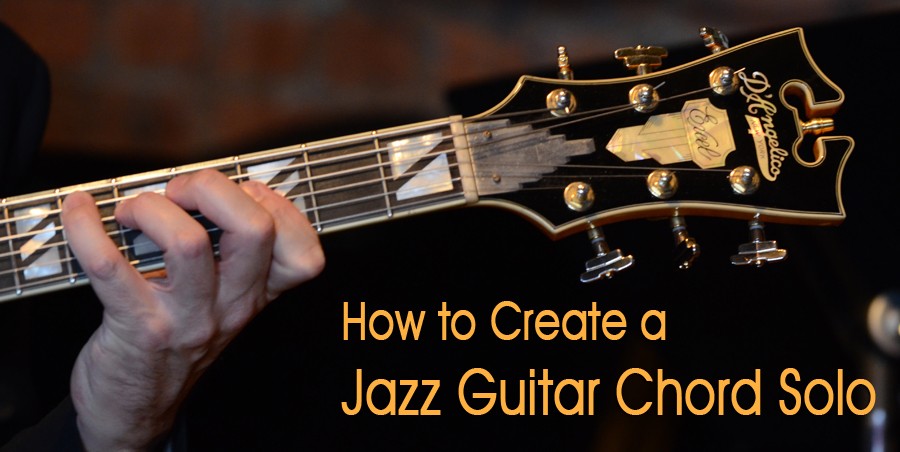How To Create a Jazz Guitar Chord Solo
Intro
Jazz guitar students often ask me how to create a chord melody solo and I guess when you’re first starting out, it can be kind of a mystery. Some people try composing a solo on paper first and then learn it, but I personally find the result often winds up sounding somewhat stiff and contrived. So over the years, I’ve settled on a method that offers a lot of flexibility and seems to work very well. It wasn’t anything that I set out to do (other than just wanting to play a good version of whatever tune I was learning) but rather a process that evolved over time, and now I realize that over the last 20 or so years, this is pretty much what I always do when encountering a new tune.
The Method
- Pick a tune that you like. It can be one you’ve heard on the radio or on a cd, or if you go to jam sessions or places where you might have a chance to sit in, pick something that they play. Whatever it is, it should be a tune that you can get excited about. A tune that you really want to learn.
- Go through your record, cd, mp3 collection and find and listen to as many versions of the tune as you can. If it’s a tune with lyrics, at least some of those versions should be with singers. If you feel like your collection is pretty weak for that tune (if you can’t find at least about 5 versions or so) then go online and find some more (I usually use this as an opportunity to use of some of my eMusic credits and wind up with anywhere from 15-30 versions of a tune).
- Listen, listen, listen! This is the fun part. Enjoy it!
- Memorize the lyrics. I often write them down on an index card and keep it in my pocket and as I’m going about my business for the next few days (buying groceries, working in the yard, or whatever) the tune is constantly in my head. I find myself just singing it to myself. The beauty of this is that you really don’t have to try to do anything, it just happens. If I can’t remember a lyric, it will bug me and I’ll pull out the card and read just the line that I need, then put it back in the pocket and continue.
- Next, try playing the melody on the guitar by ear. At this point it doesn’t really matter what key. Just wherever it feels comfortable. You’ll probably want to check with some of the recordings you’re listening to though and pay attention to what key(s) most players like to do the song in. Learn the melody in the most common key first, then try it in a few others. If you’re going to do a chord melody, you’ll probably find that it lays much better on the guitar in some keys than others. Hint: You’ll probably want a register where most of the melody notes can be played on the 1st and 2nd strings where it will be possible to harmonize them.
- After you’re familiar with the melody, you’ll want to start thinking about the chords (these two activities sometimes overlap). If your ears are pretty well developed, you’ll probably just get them straight from the recording. But if you need a little help, you can take a look at a fake book. Many professional musicians I know keep iReal Pro on their smart phones so they’ve got a quick reference for tunes they’re not familiar with. Just be aware that these things aren’t always accurate and that chord changes can vary slightly from one version of a tune to another, so listening is really important. You have to decide whose changes you want to use and at this stage you’ll probably want to write out your own “cheat-sheet” with the changes you prefer.
- Memorize the changes: Practice reciting them (yes, say them out loud!). When you first try to do this, you’ll probably find it impossible to recite the changes to a whole tune from memory, so break it into bite-size pieces. Memorize from 2 to 4 measures at a time (about 4 chords) and just say them in order until it’s easy and natural (like remembering a phone number). Then do the next few chords. Then put them together. Do this until you can get through the entire tune reciting the changes from memory in time! As with the lyrics, I’ve always found it useful to write the changes out on a sticky note or file card and keep it in my pocket as a quick reference. Don’t just read the changes off the paper though. Glance at them for the information you need and then put them away and get back to the business of memorizing. I actually like to do this when I’m out walking or jogging because it forces me to do it in rhythm (my footsteps become my metronome) and I hear the tune in my head as I’m saying the changes. I should also mention that at this stage of the game, we’re only interested in the most basic family of the chord; Major, Minor, Seventh (and sometimes Diminished).
- Back at the guitar, play that melody and really pay attention to where you feel that the chords belong. Sometimes they’ll be right on a melody note, but often you’ll notice that they fall in between melody notes (like the chord changes in “Autumn Leaves” that fall mostly between the phrases). Use your ears and your knowledge of the melody and chords to choose voicings that you like (I did a lesson video on Chord Melody Voicings that you’ll probably be interested in). You might want to use a sheet of chord frame paper to jot these down as you’re working (the visual impression can really stick in your memory along with the sound).
- Play the tune A LOT! I often spend weeks on a tune, coming back to it day after day, making little changes and improvements to my arrangement as I go. The way I play the tune evolves over time until I arrive at something I’m happy with, and then I keep playing it until it just flows effortlessly.
- Optional Step: After you’ve got an arrangement you’re happy with, write it down in standard-notation and/or tab (I love Guitar Pro for this because it will do both at the same time). Although I say this is an optional step, it can be a really important one because it helps cement the arrangement in your memory, and also serves as a quick refresher if you don’t play the tune for awhile and return to it (why waste the results of all that work you did in the first 9 steps?) I may return to an arrangement and find things that I’d change about it, but having worked it out the first time gives me a lot of insight into the song and a good “restarting” place.
Conclusion
The point of all this is that playing jazz music is more about a journey than it is about a destination. I’ve been doing this for many years, and what I just outlined above is still the way I approach learning any new tune. I do it because for one thing it’s just enjoyable in and of itself (I can get lost in a tune for hours, days or weeks). But I also know from experience that it works so I’ve just learned to trust the process.
Hope this helps!


